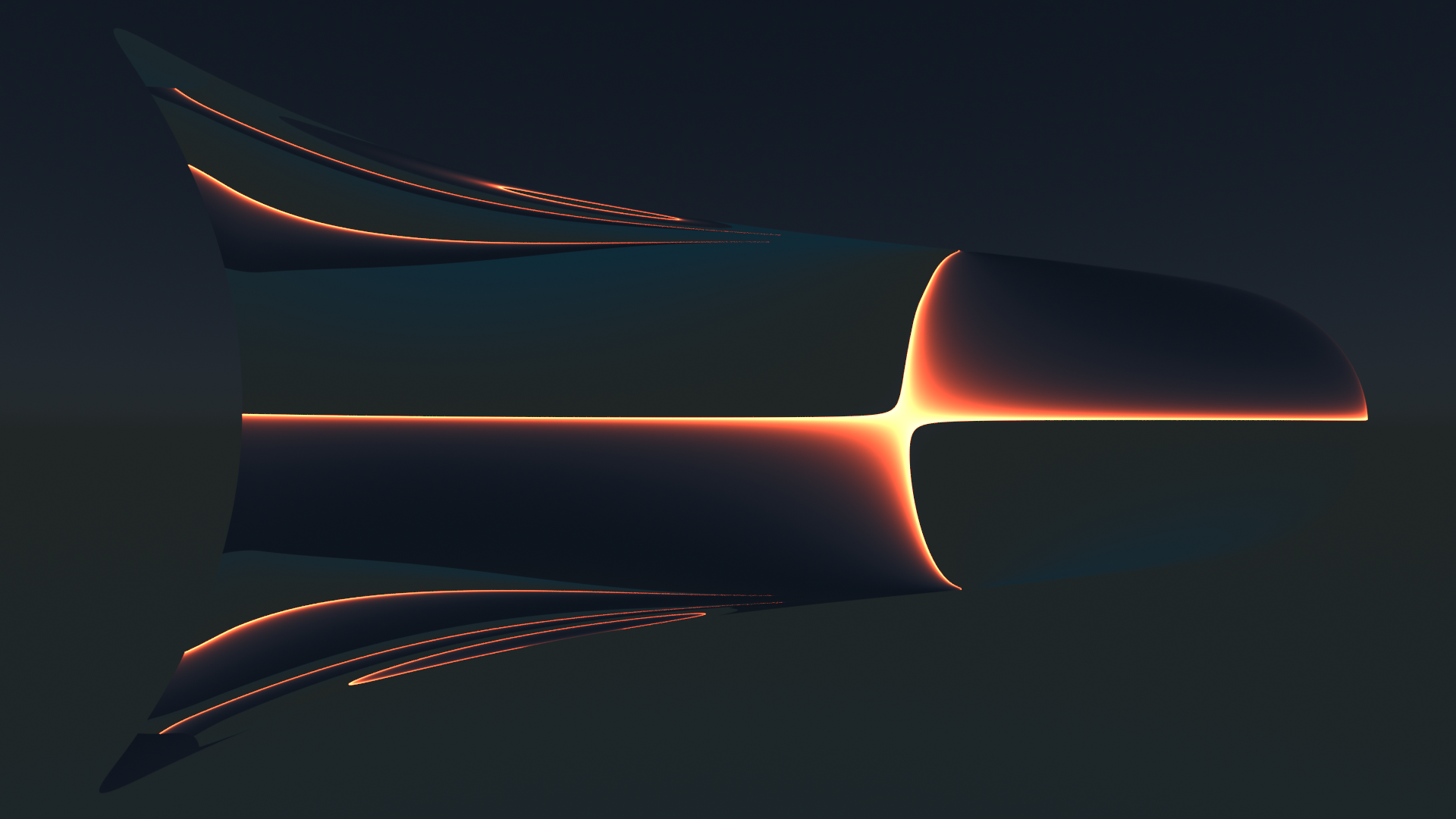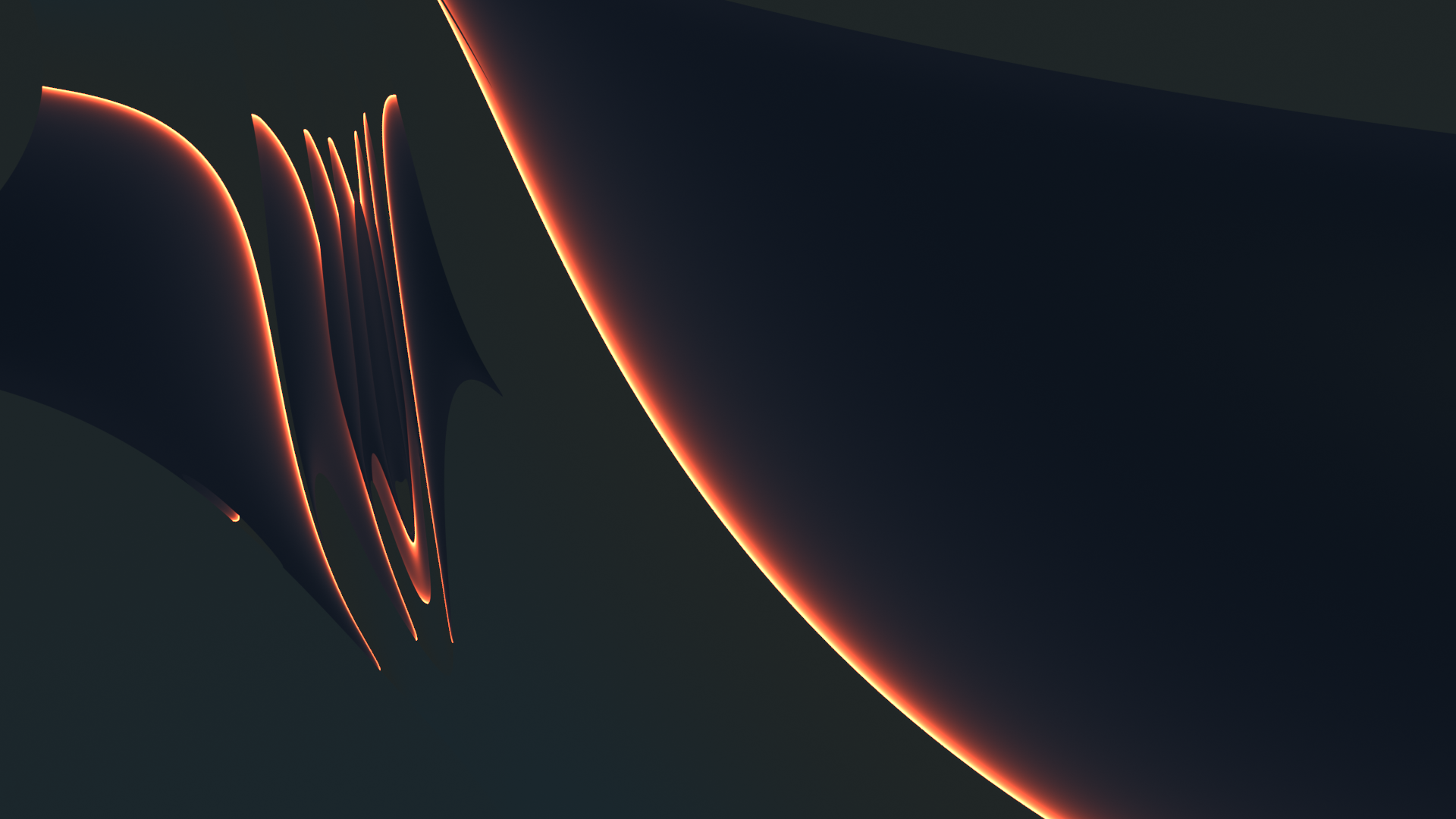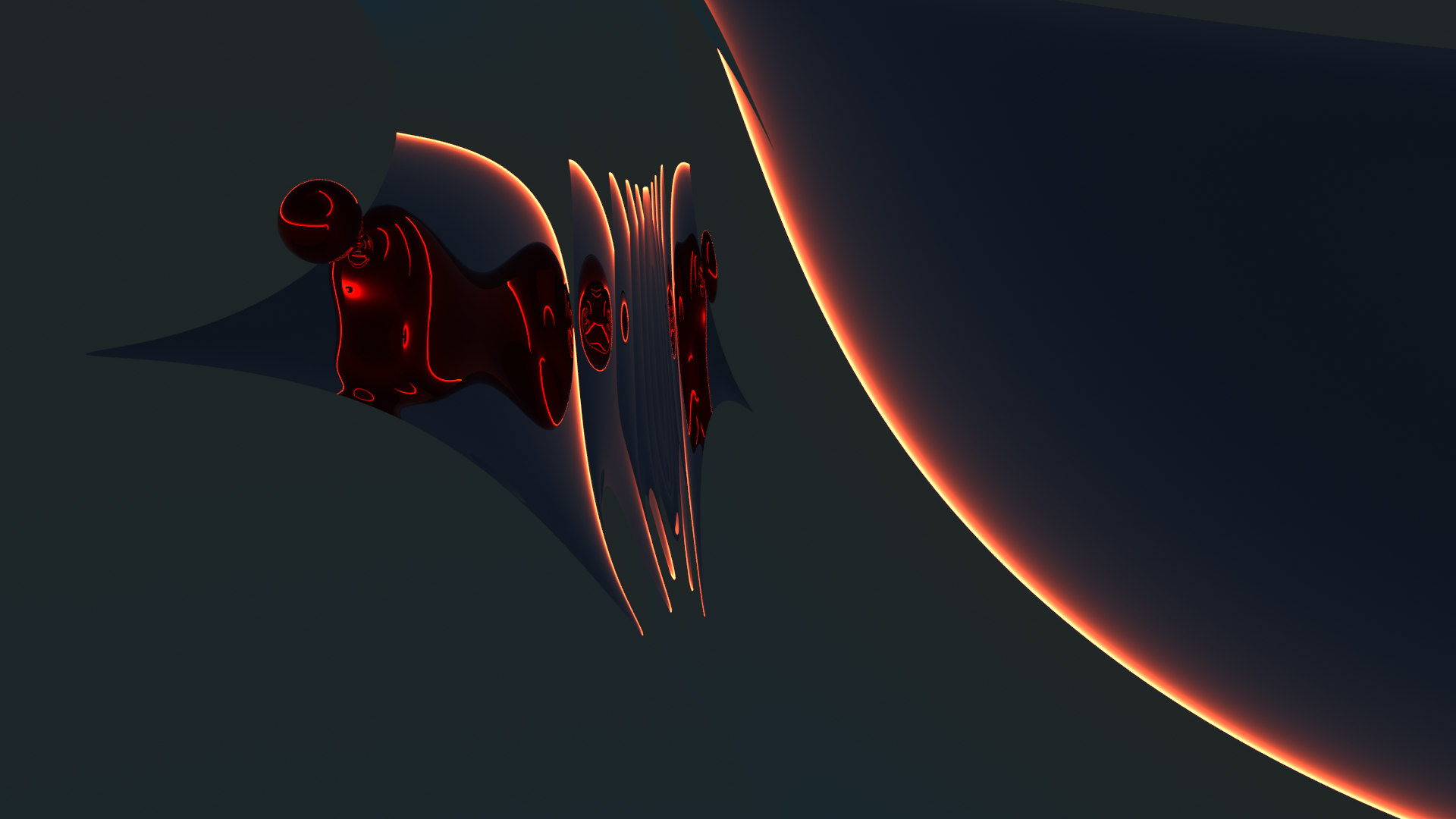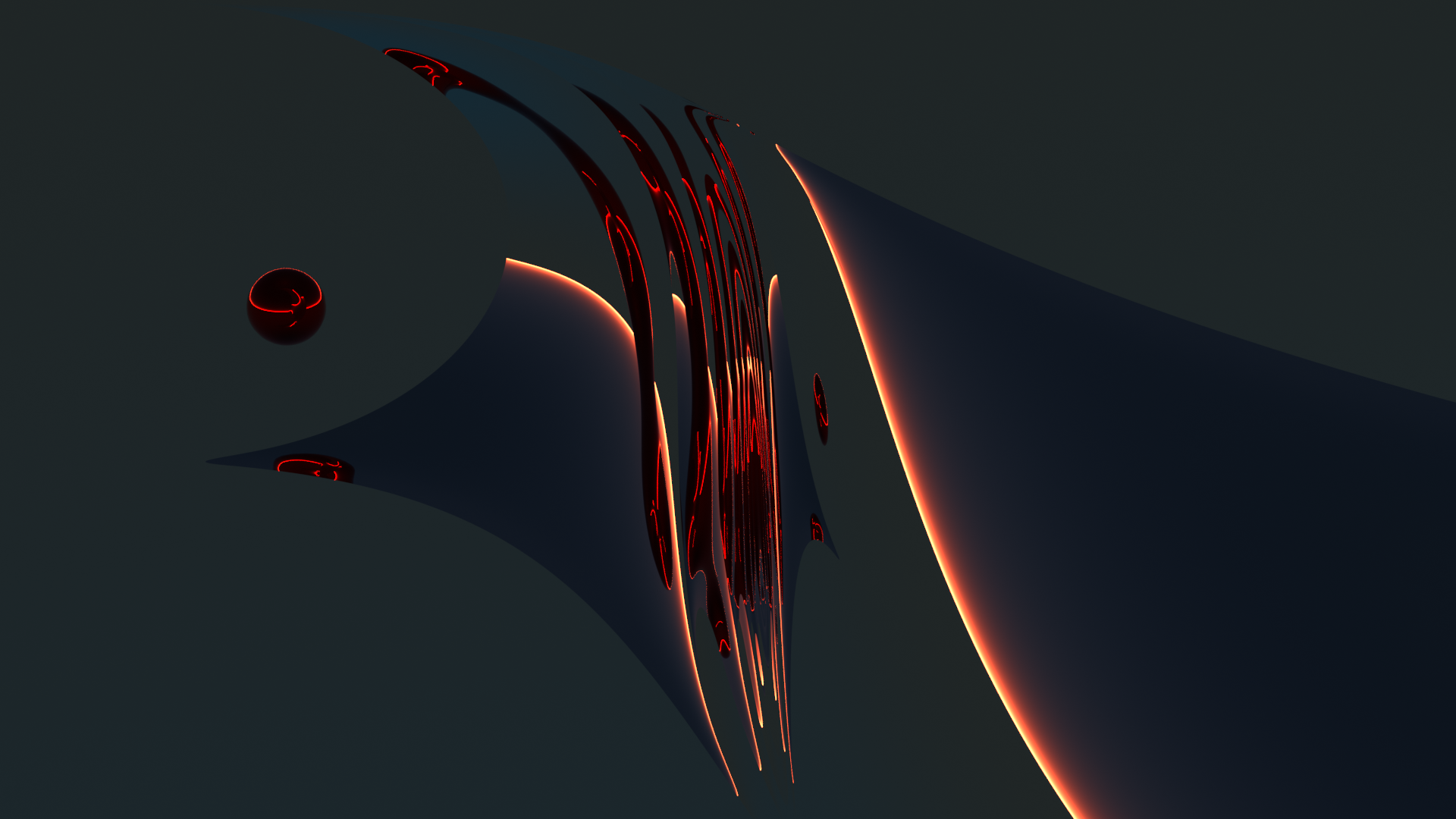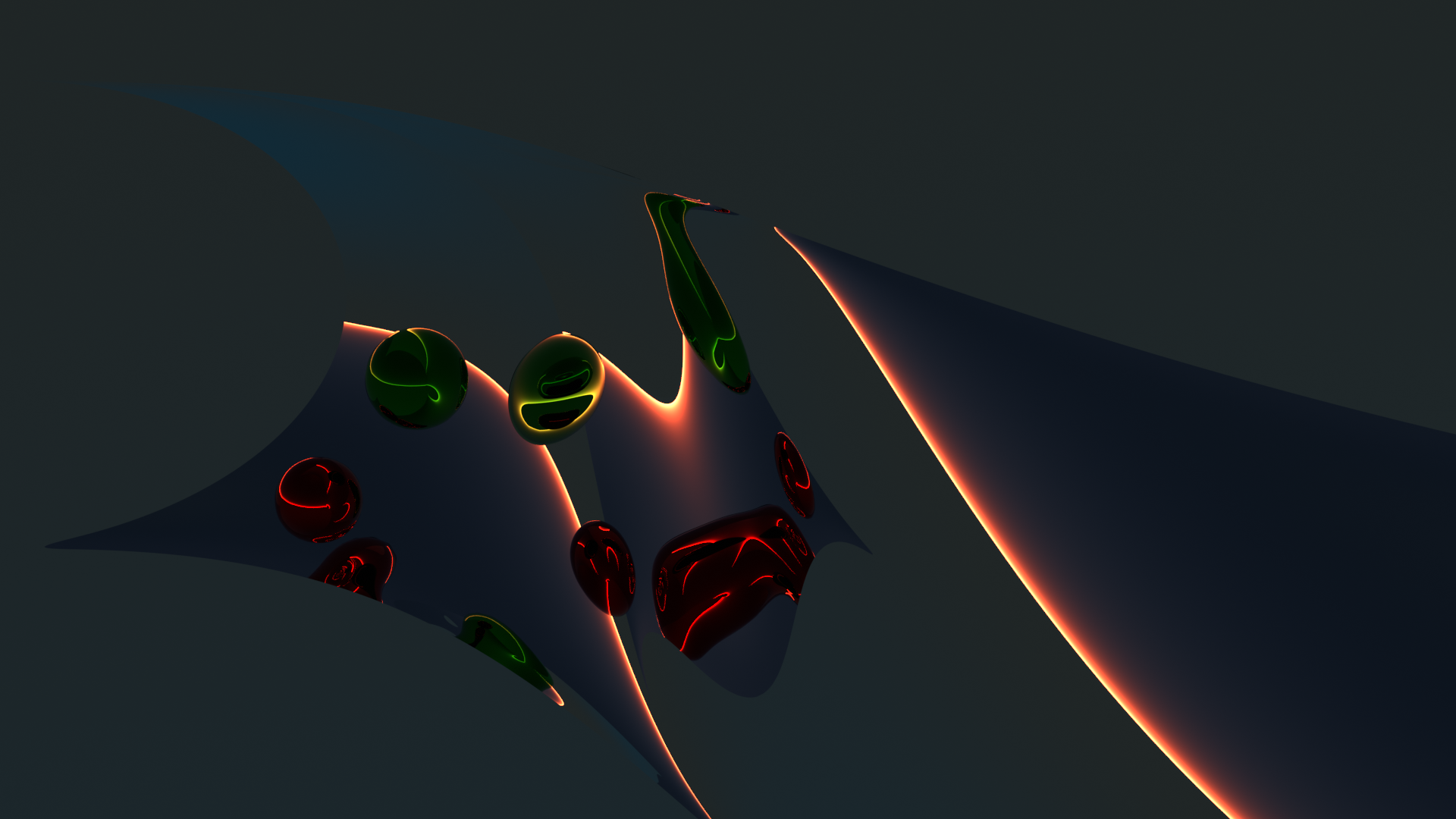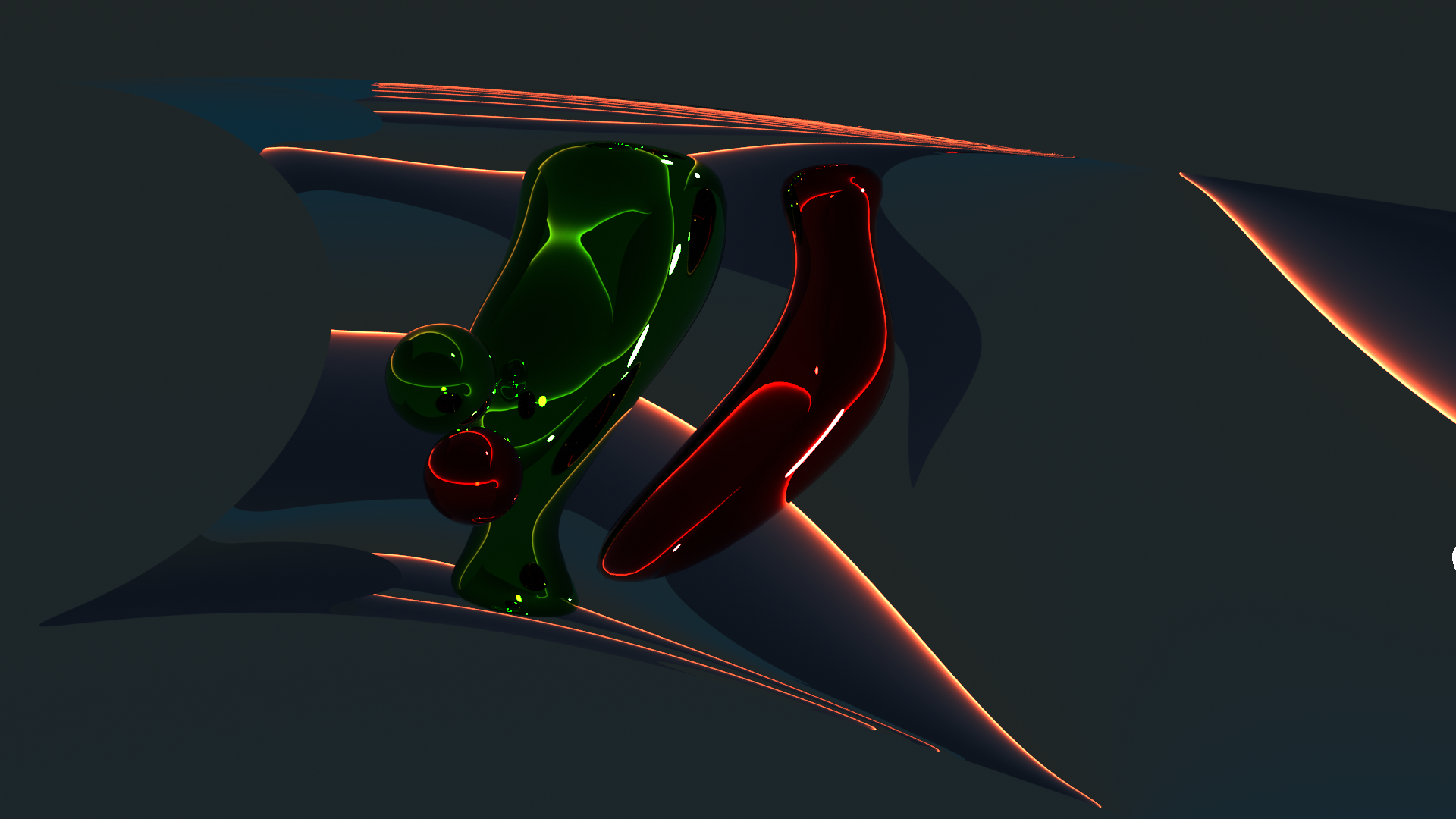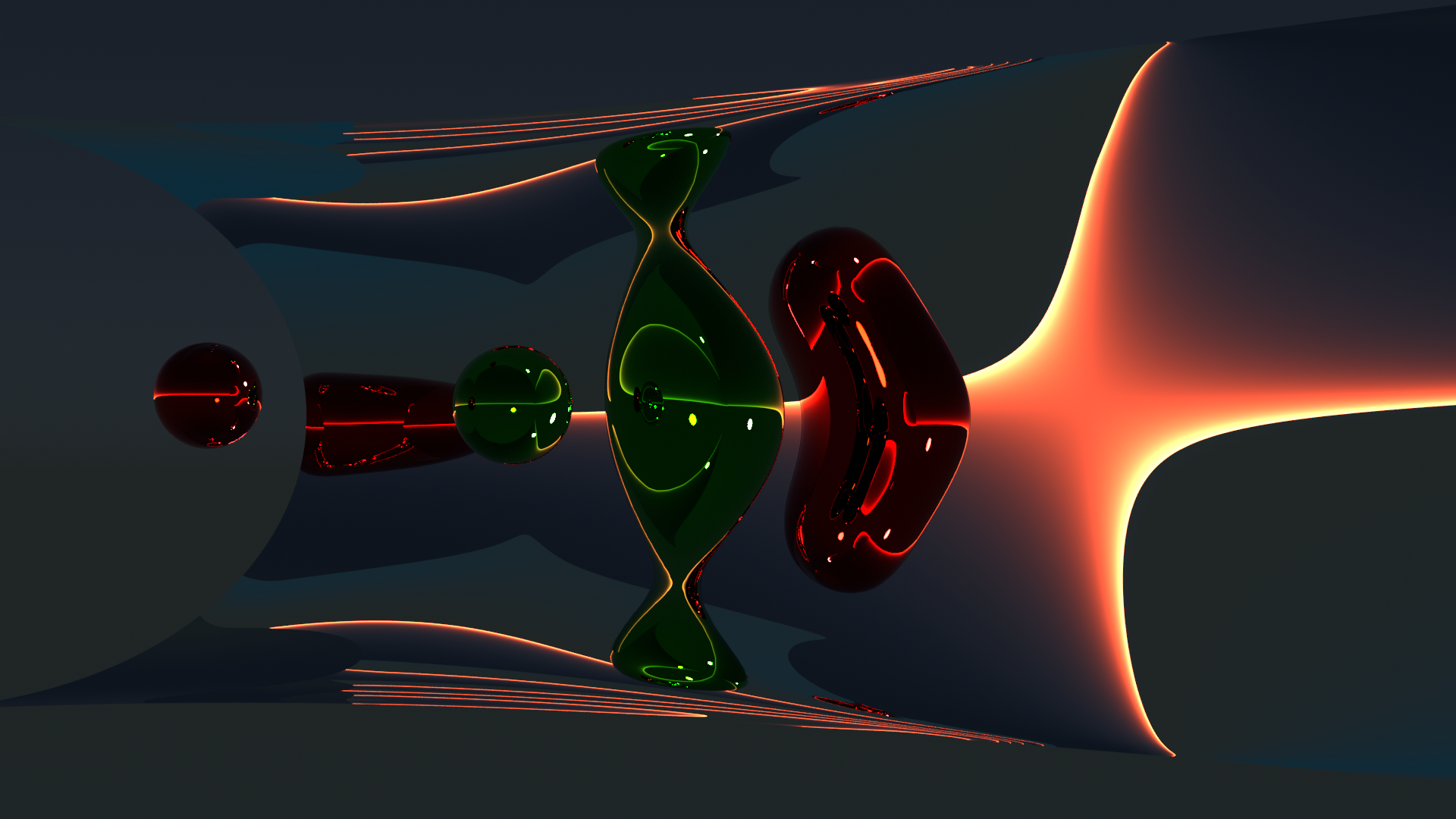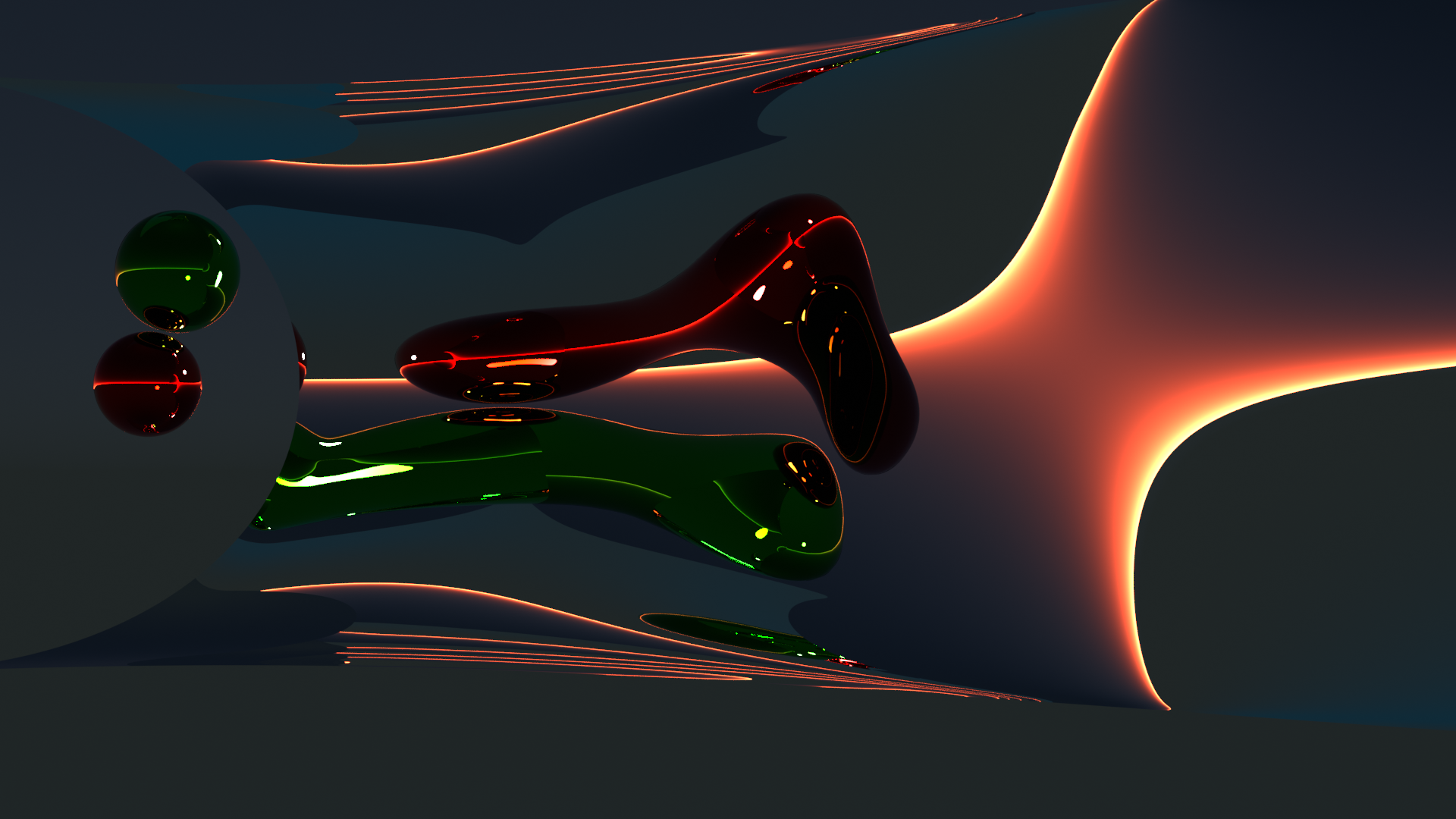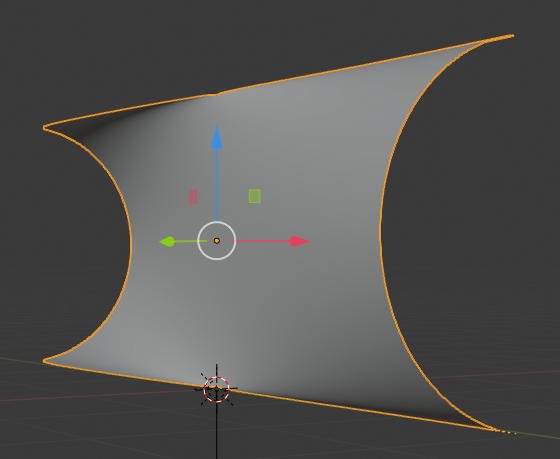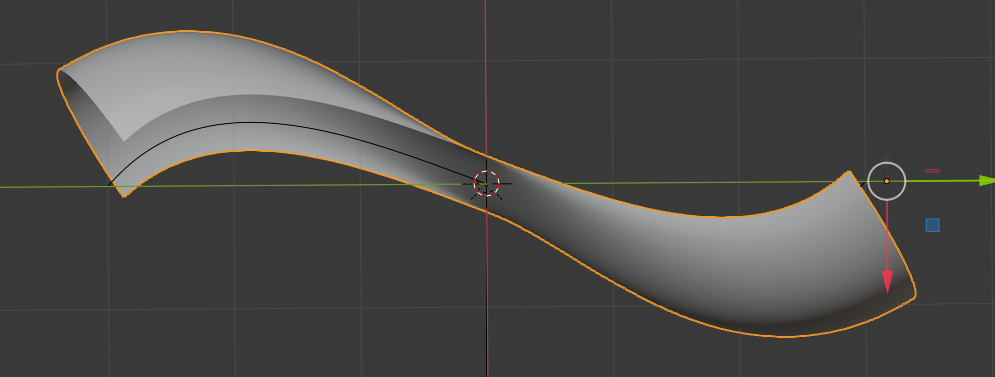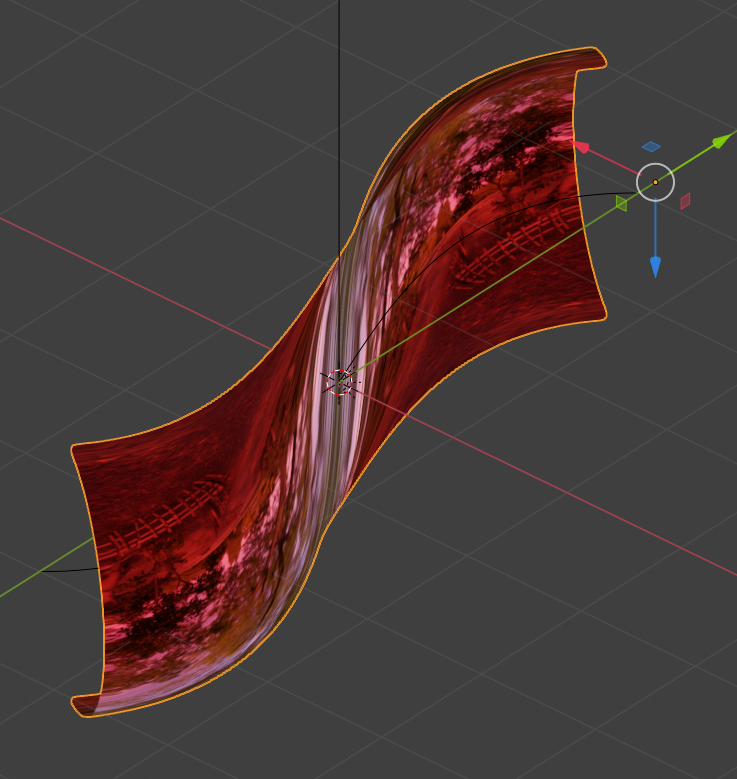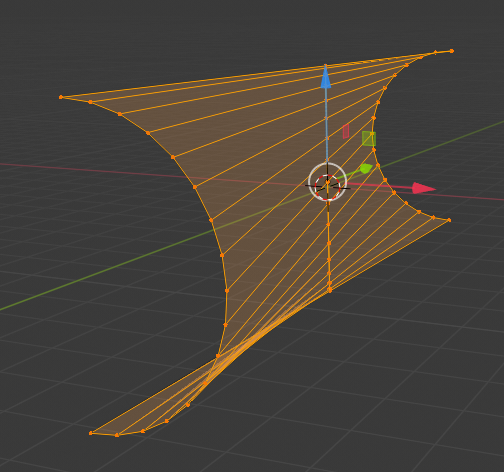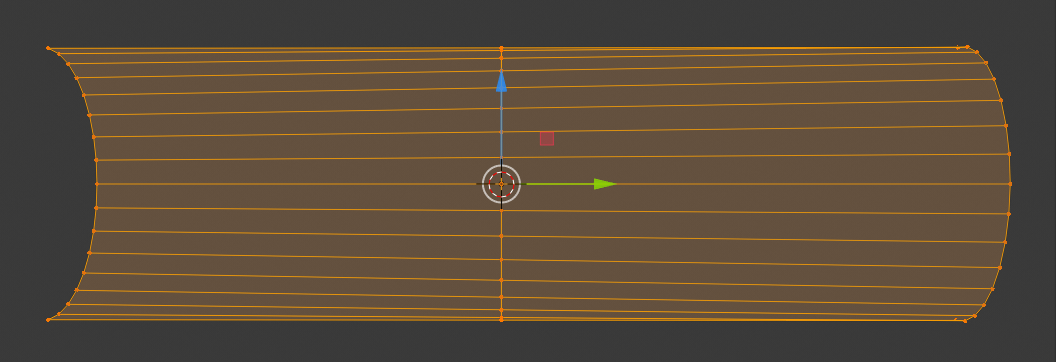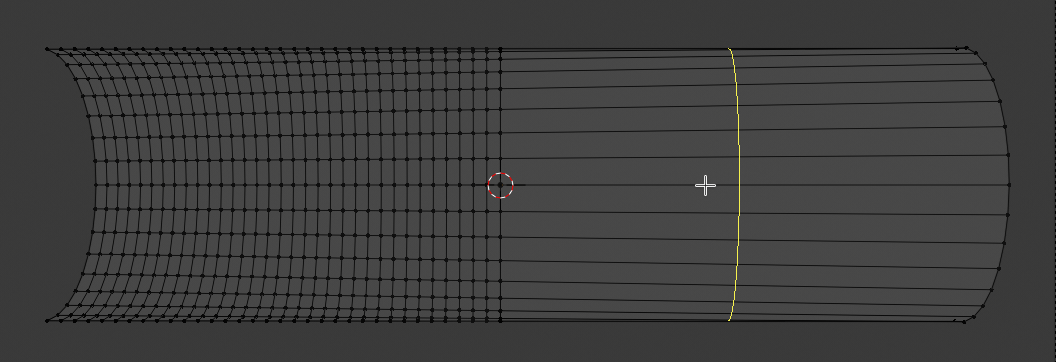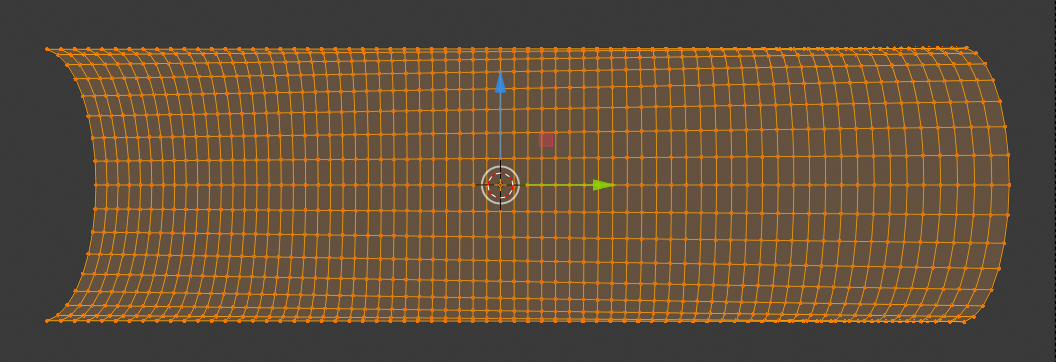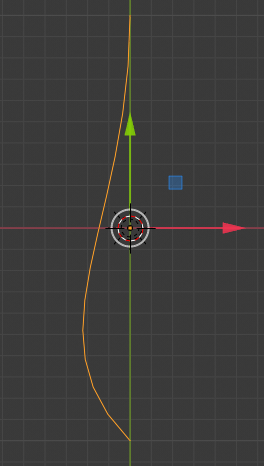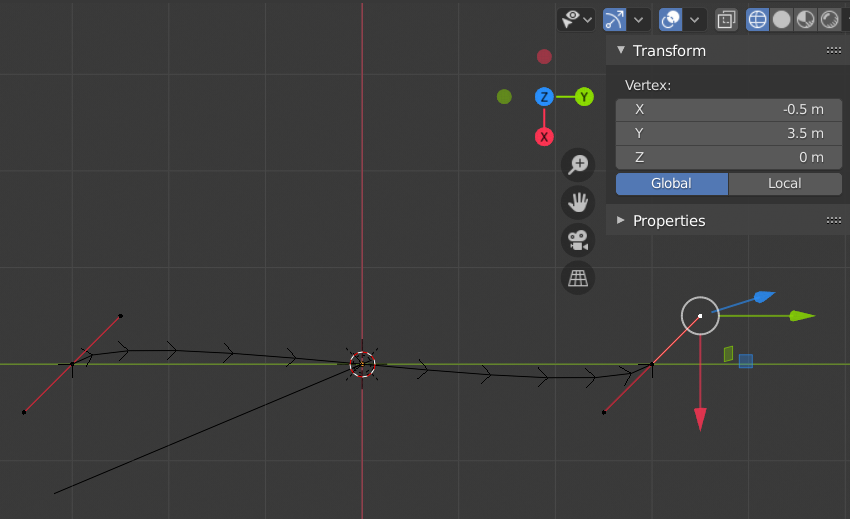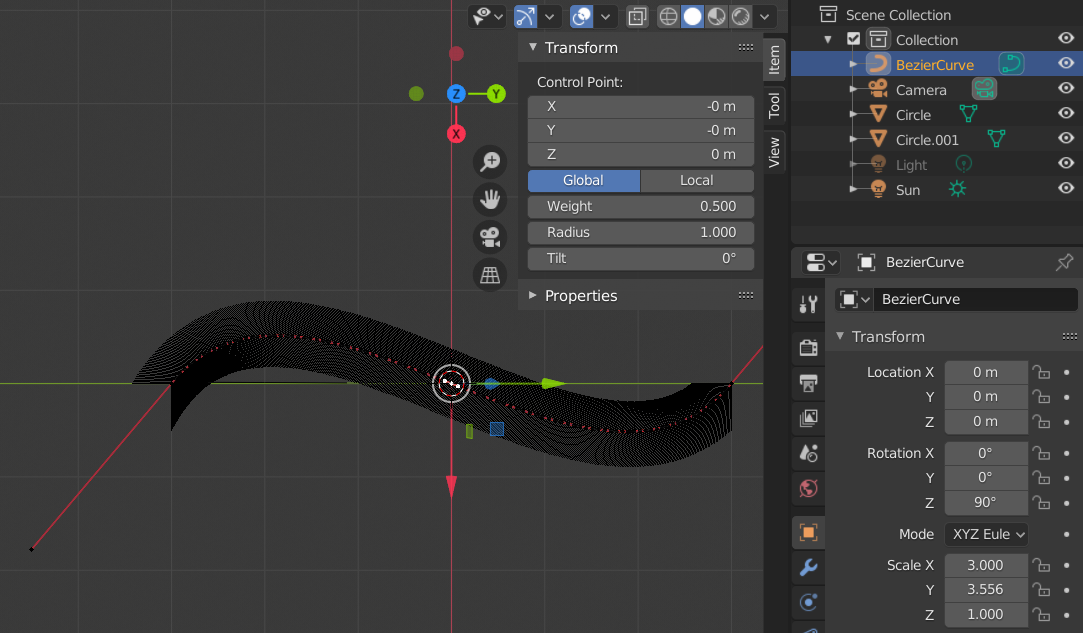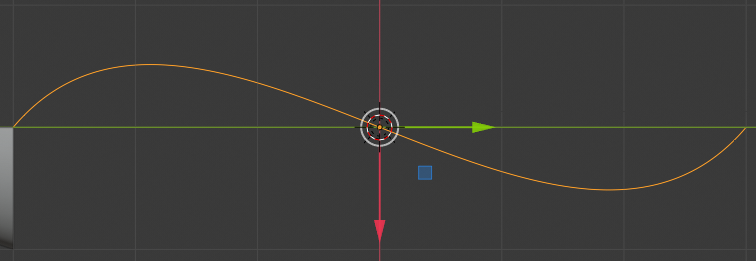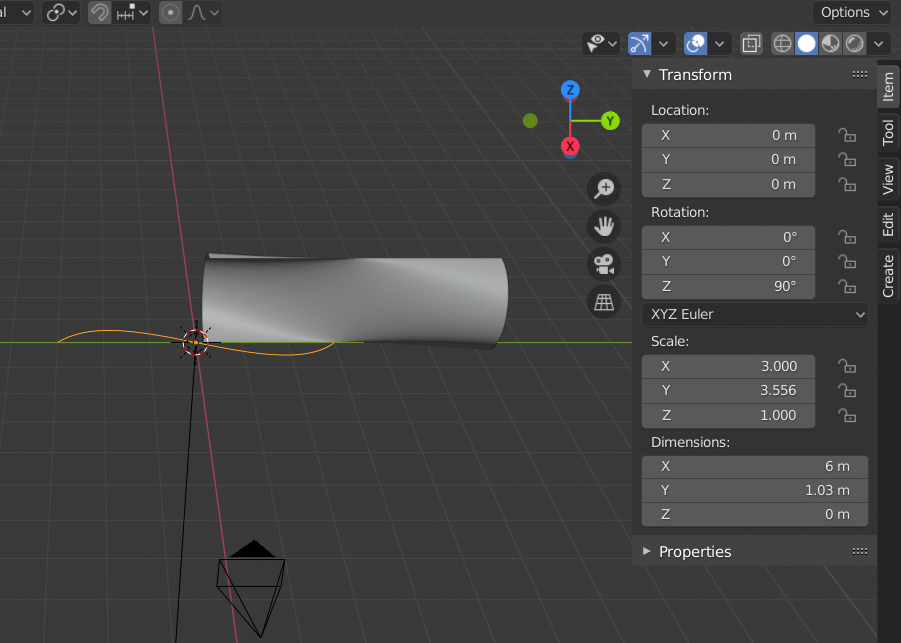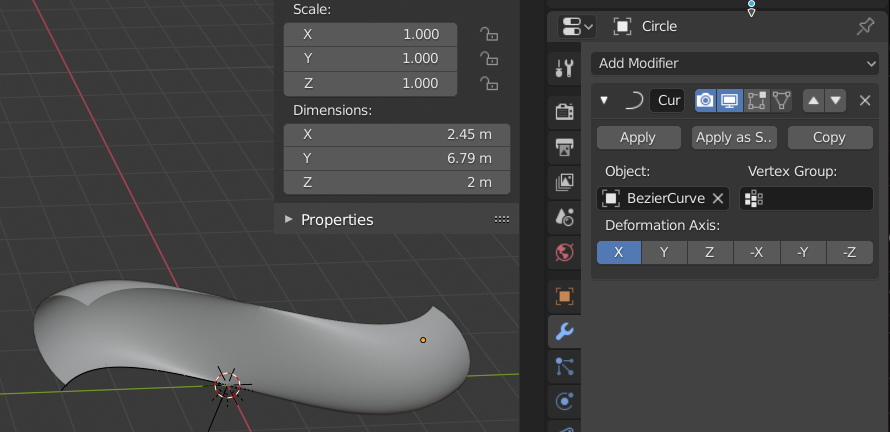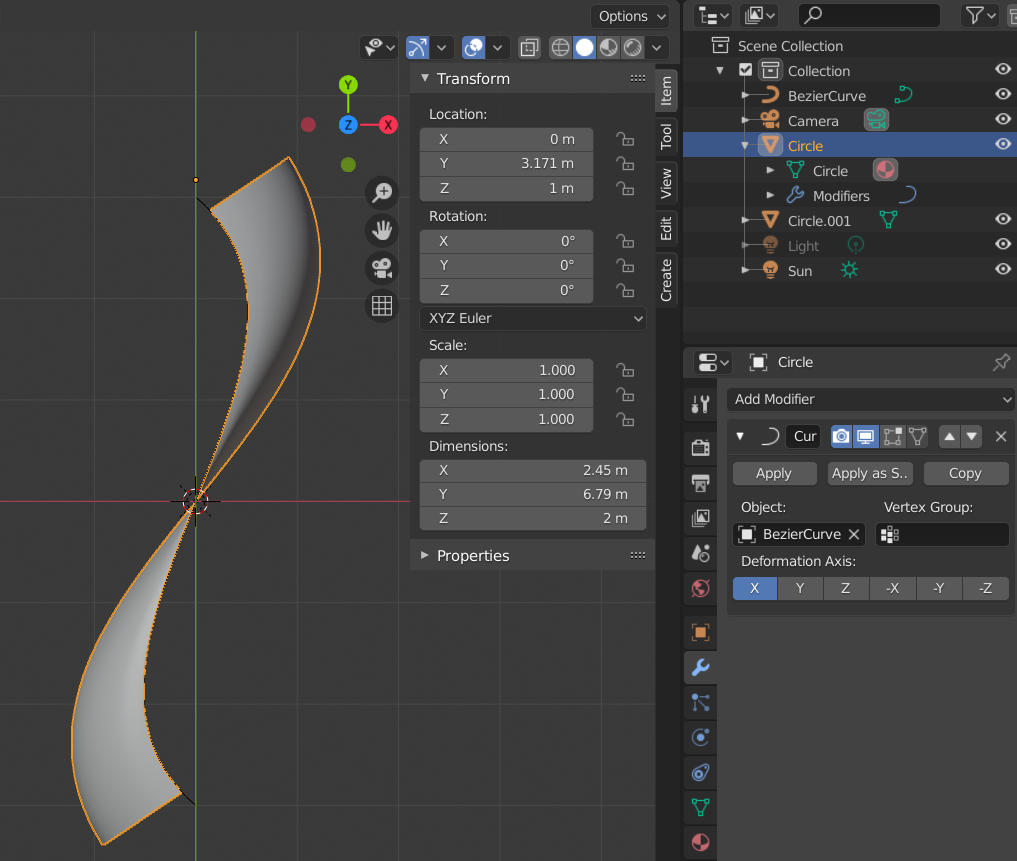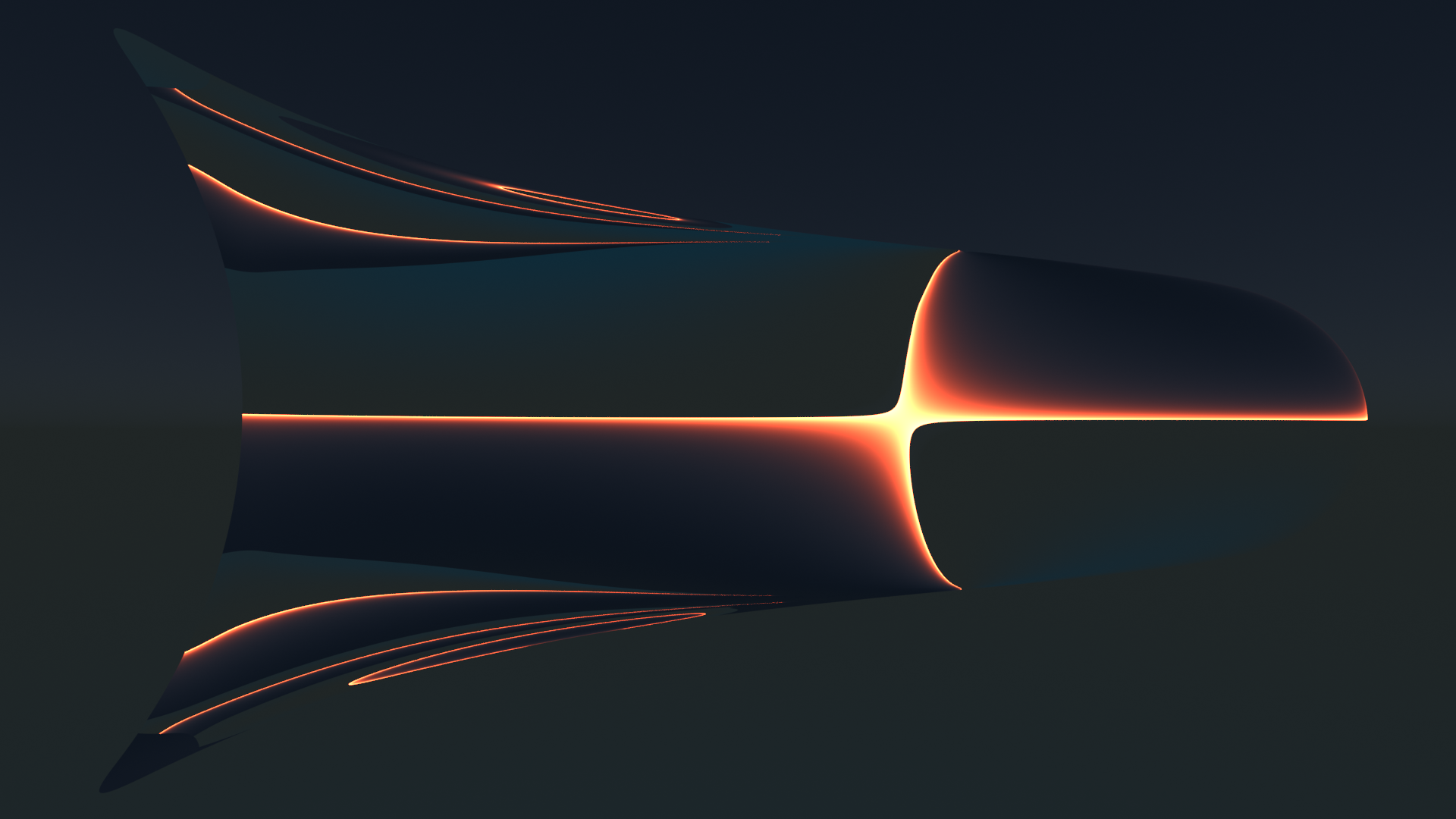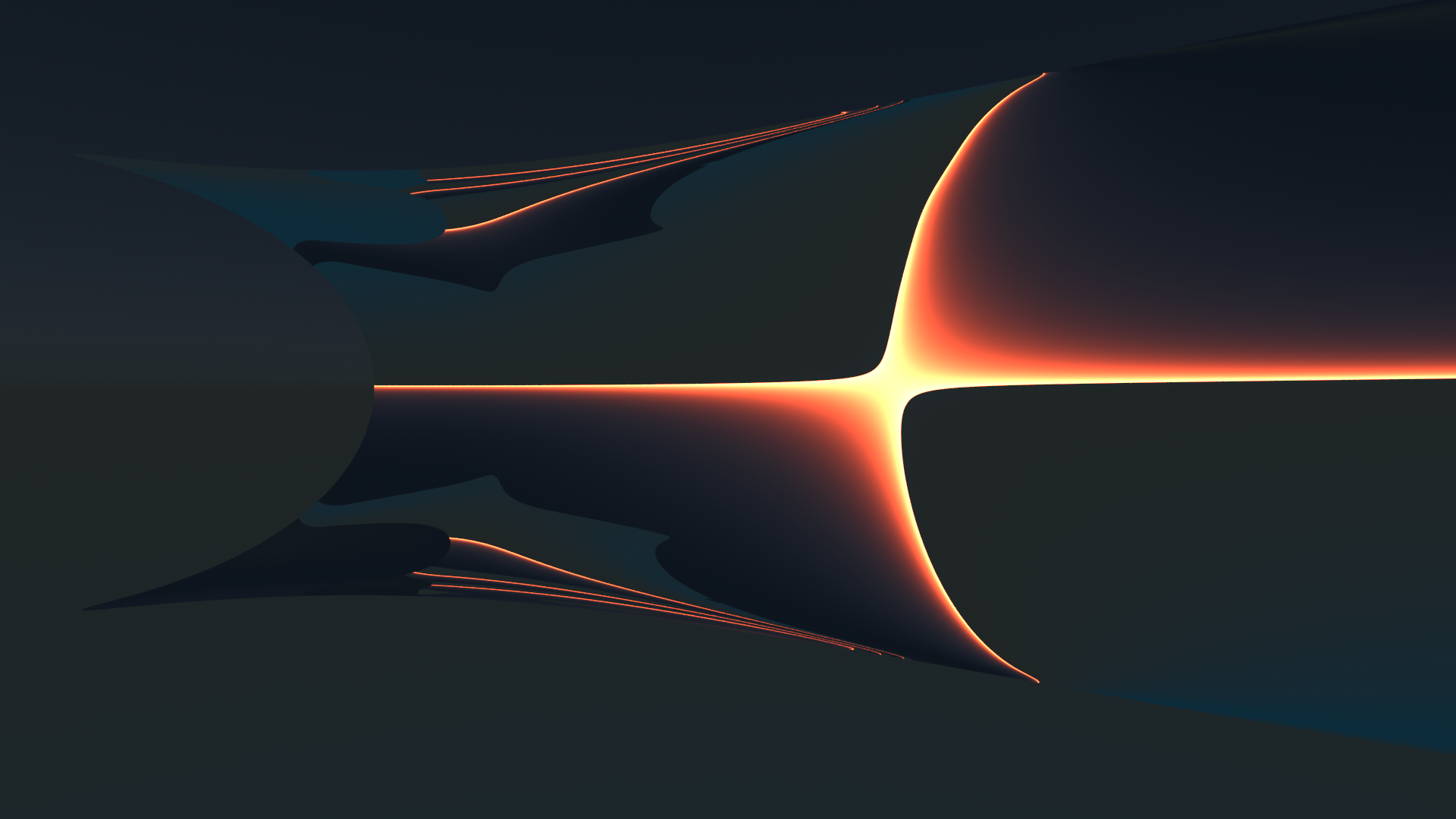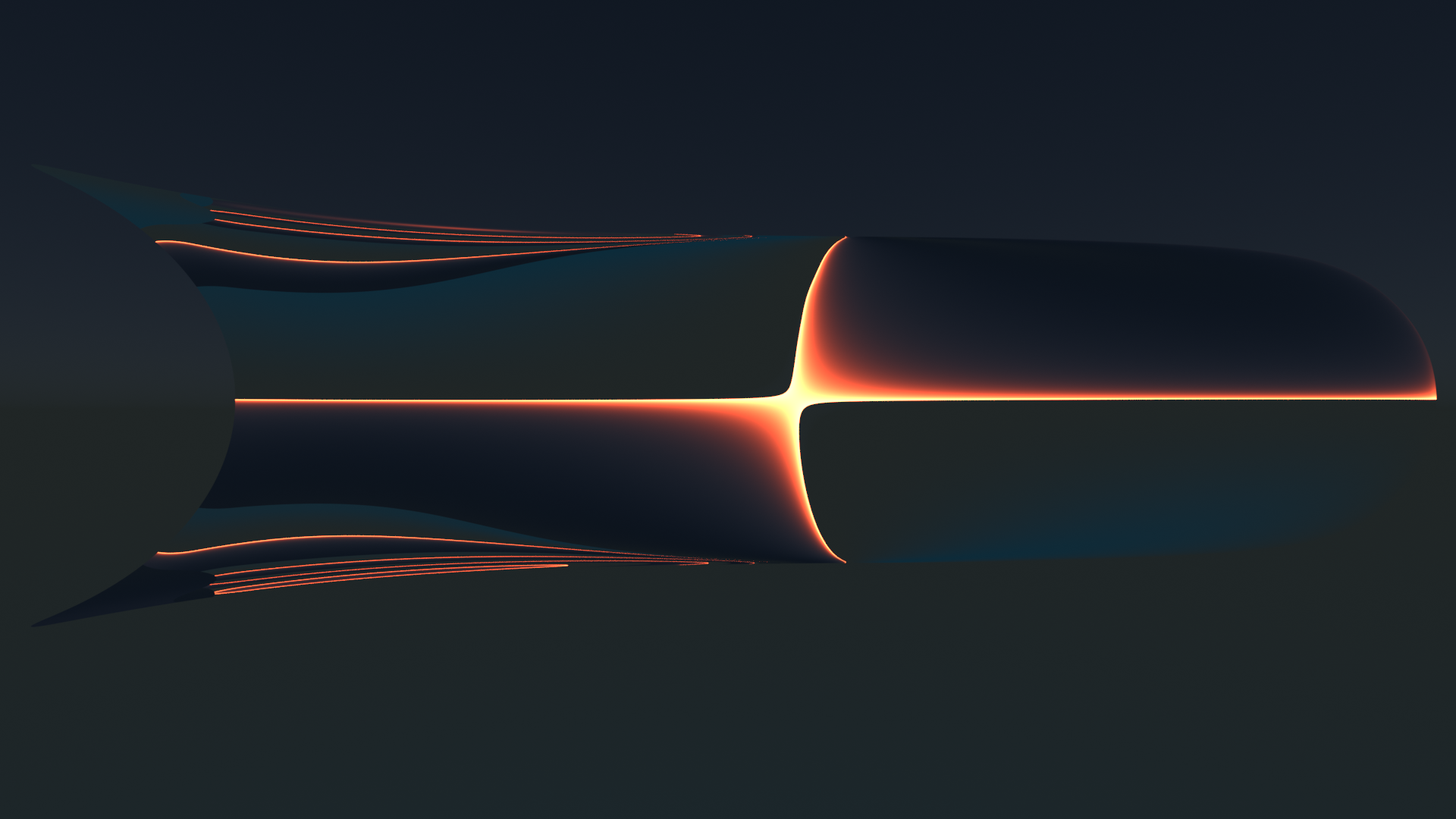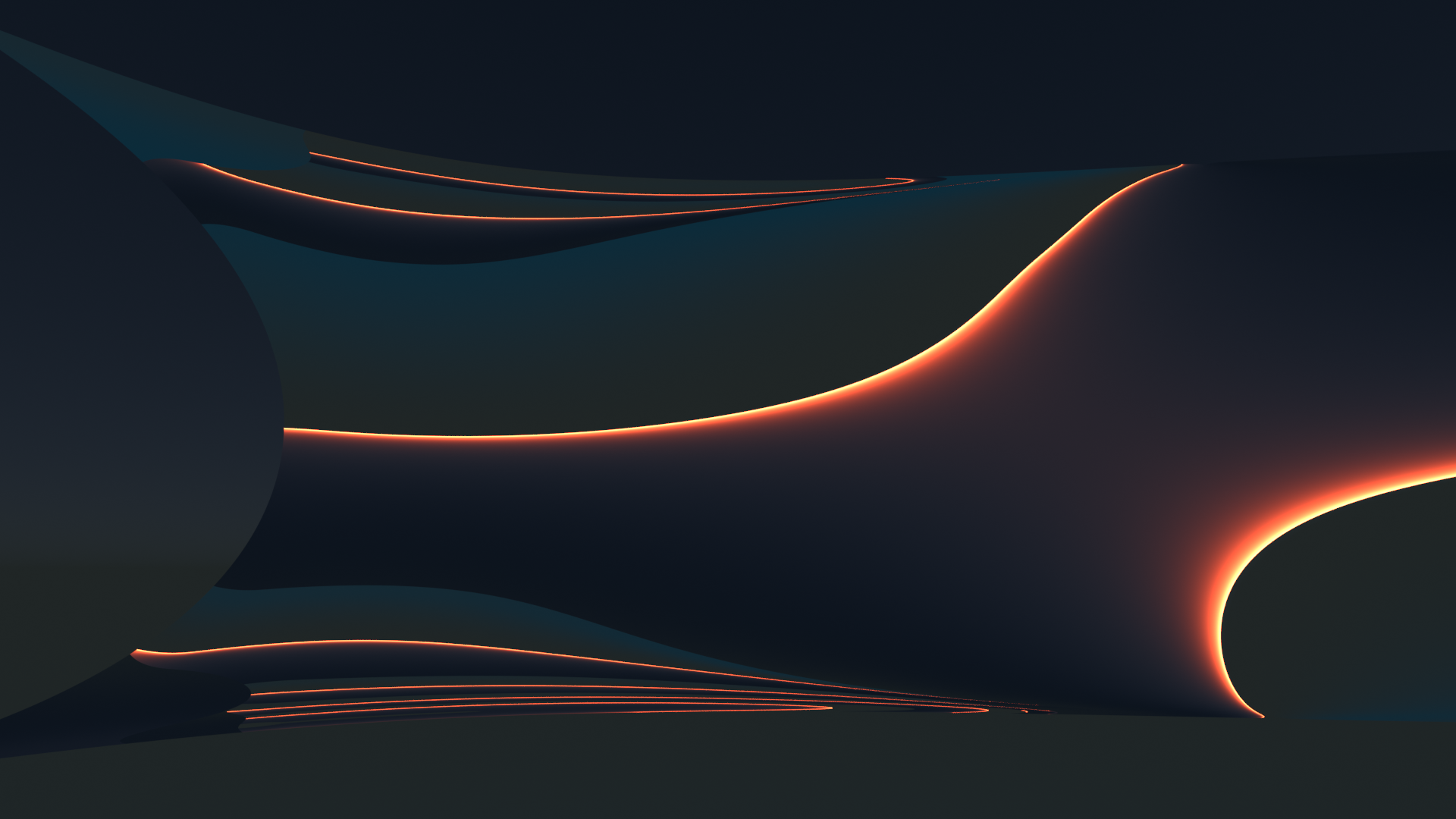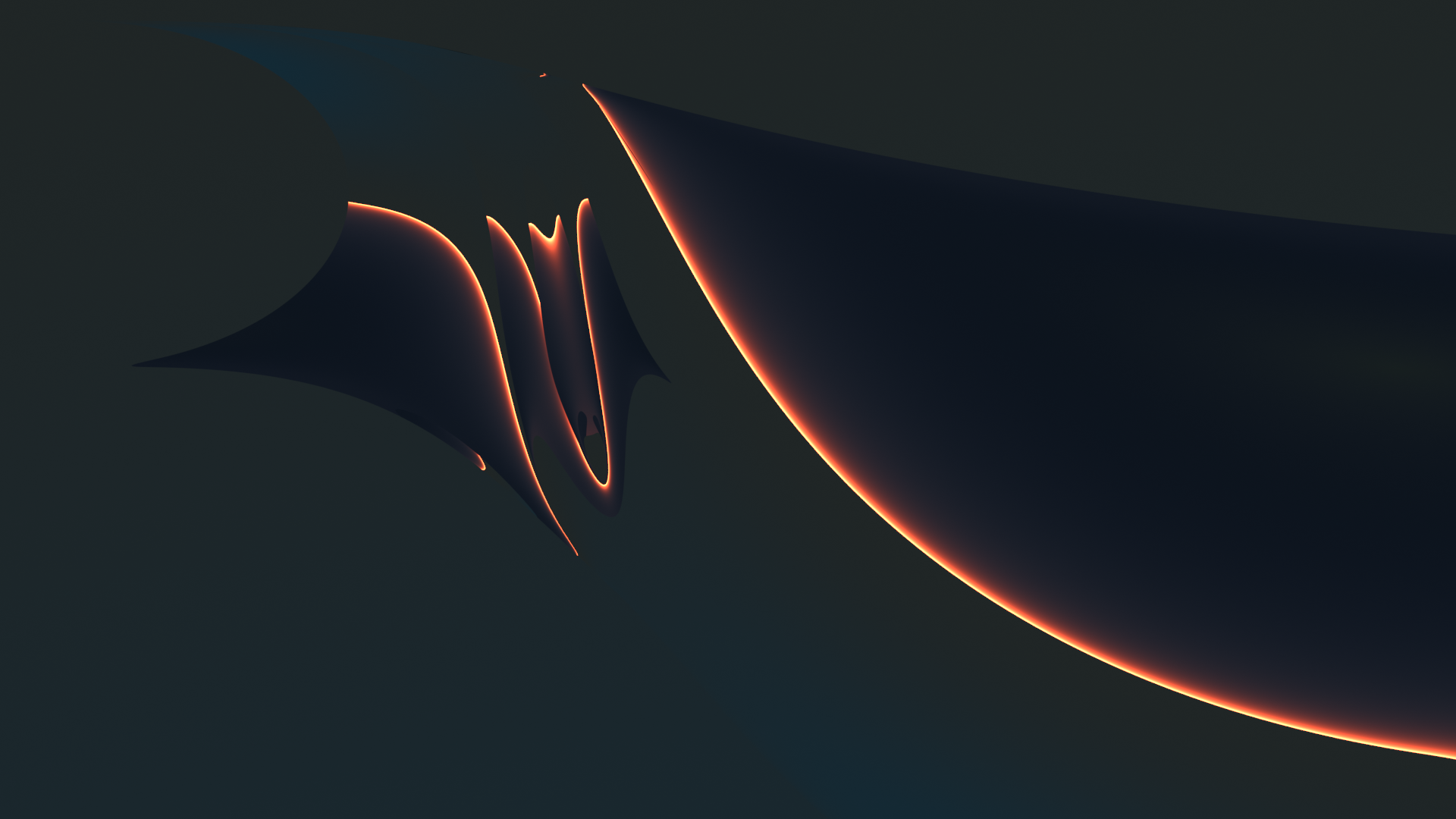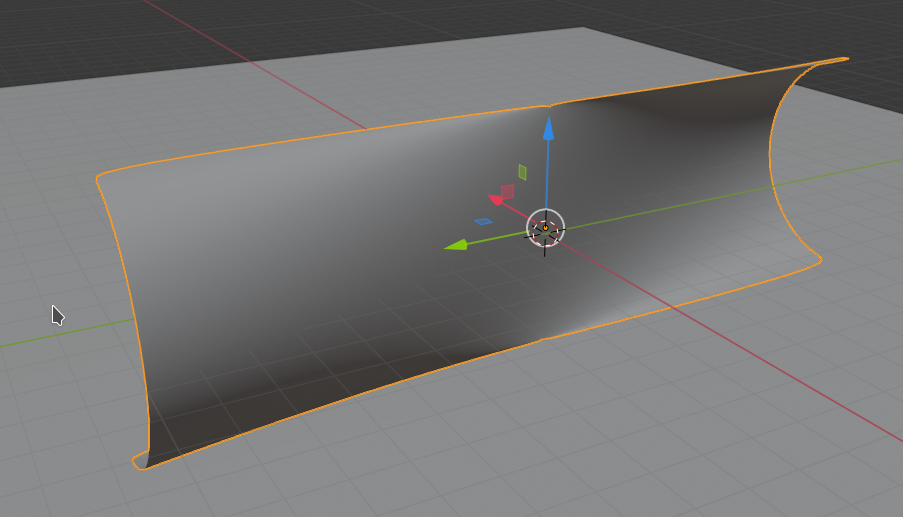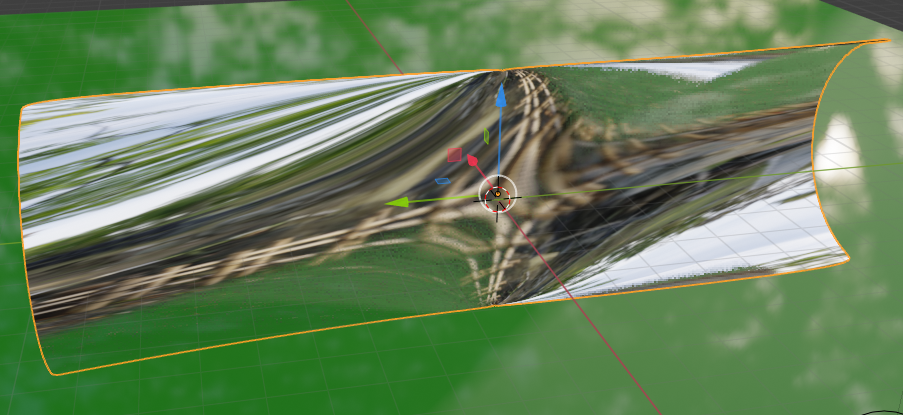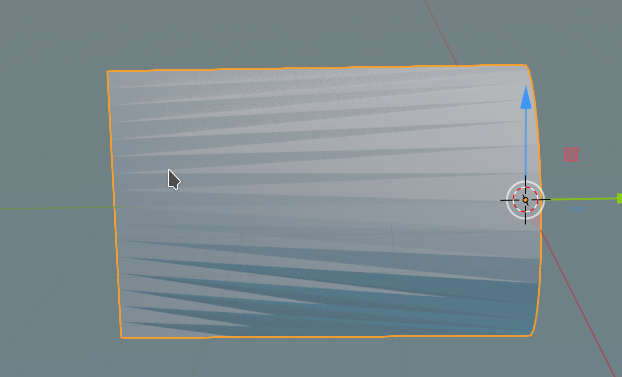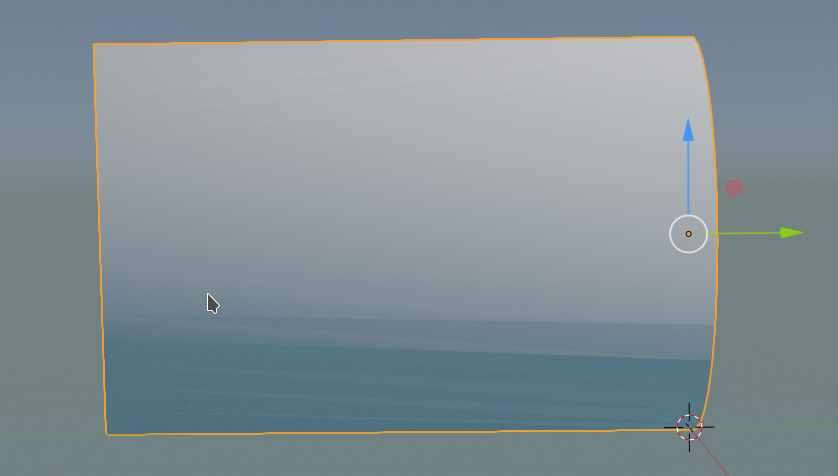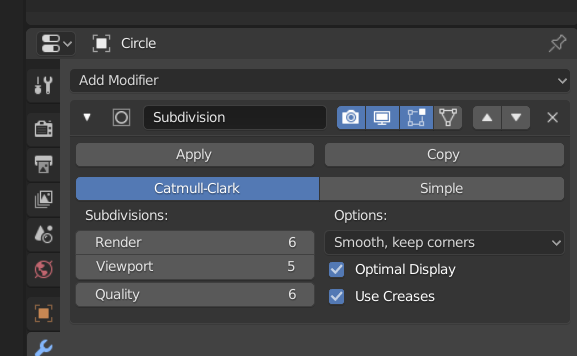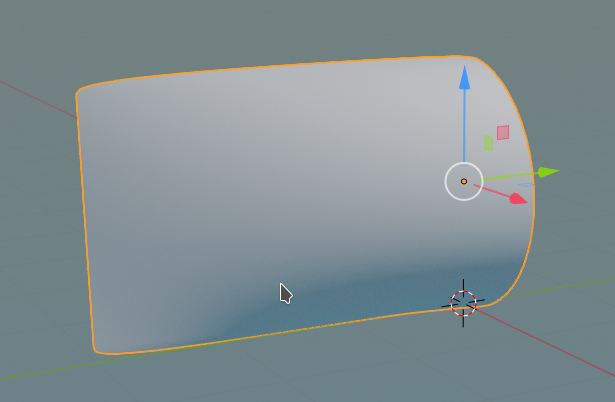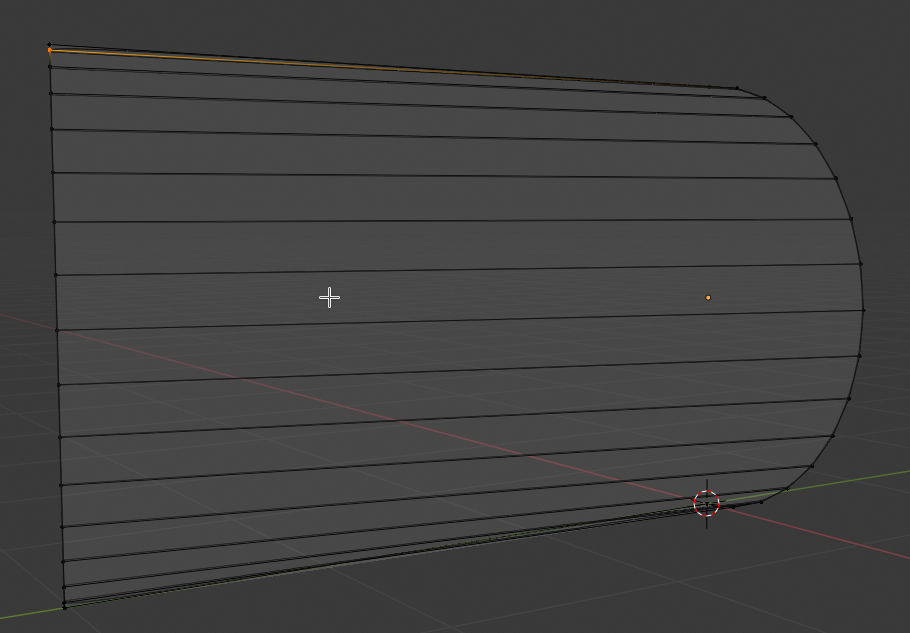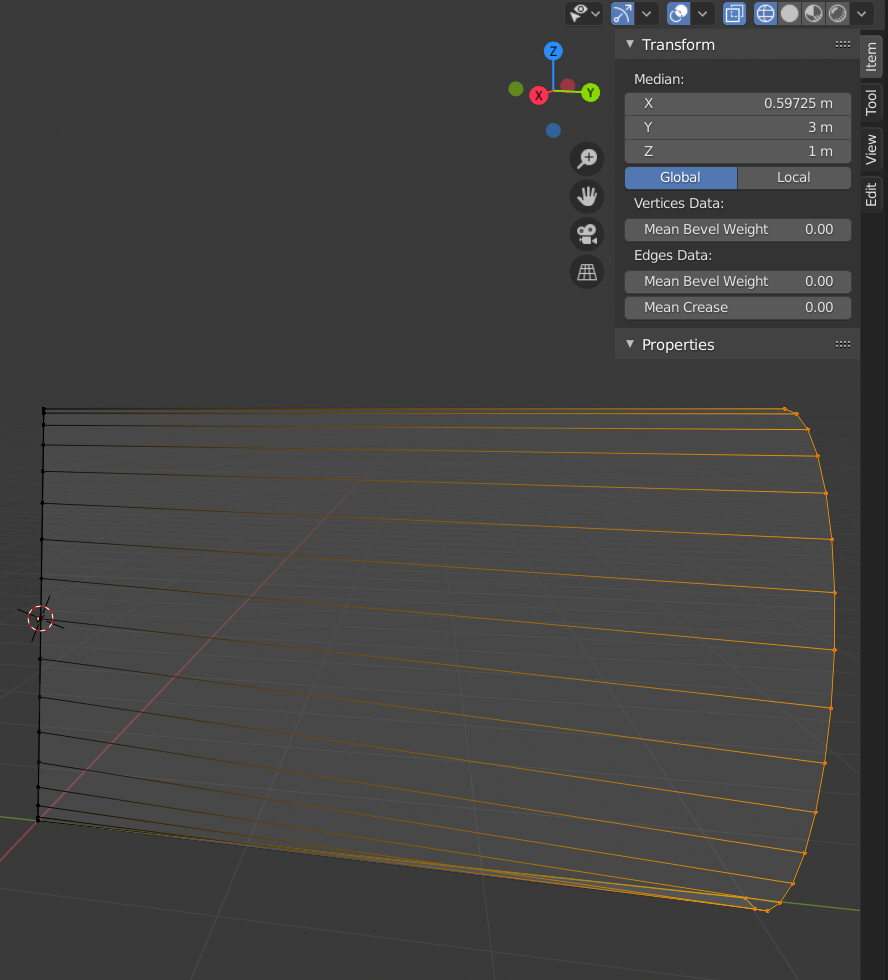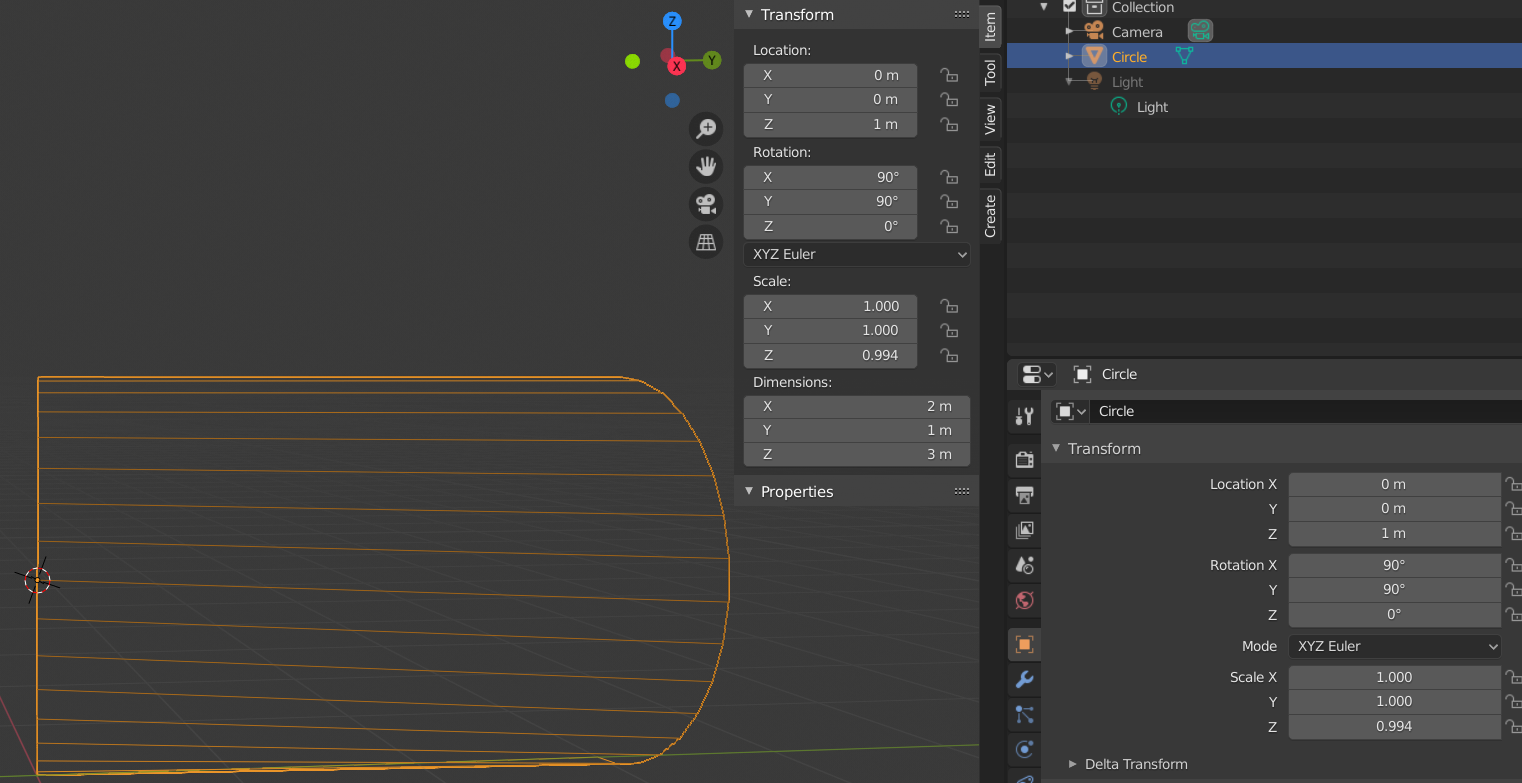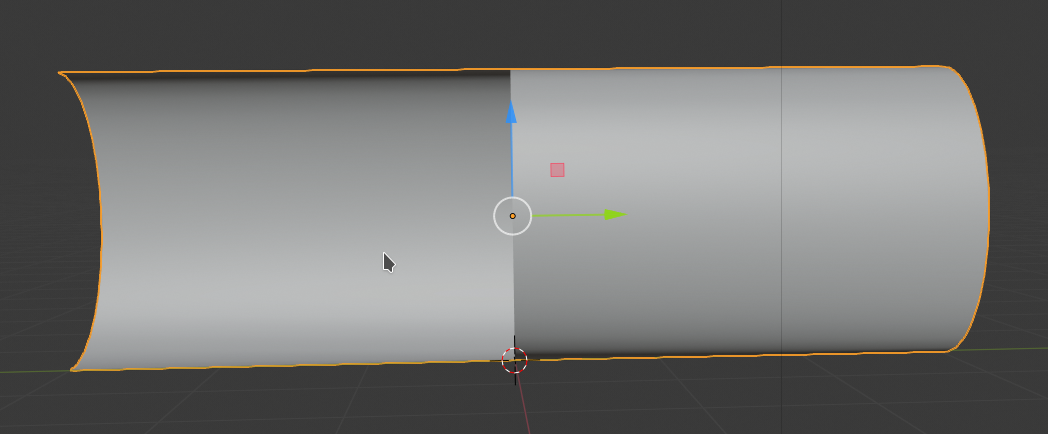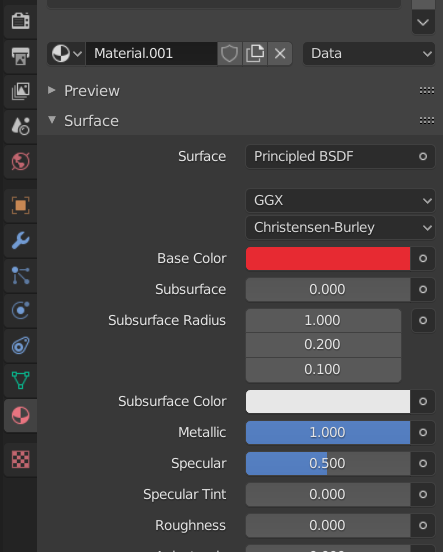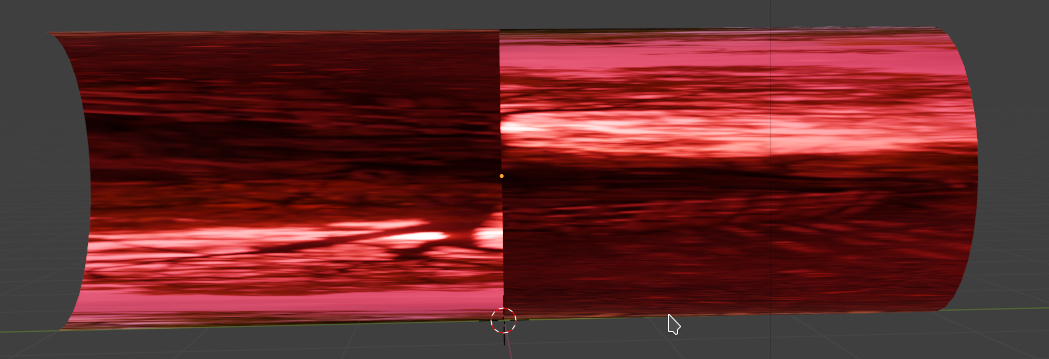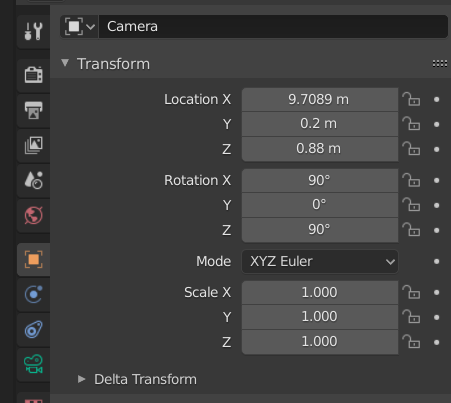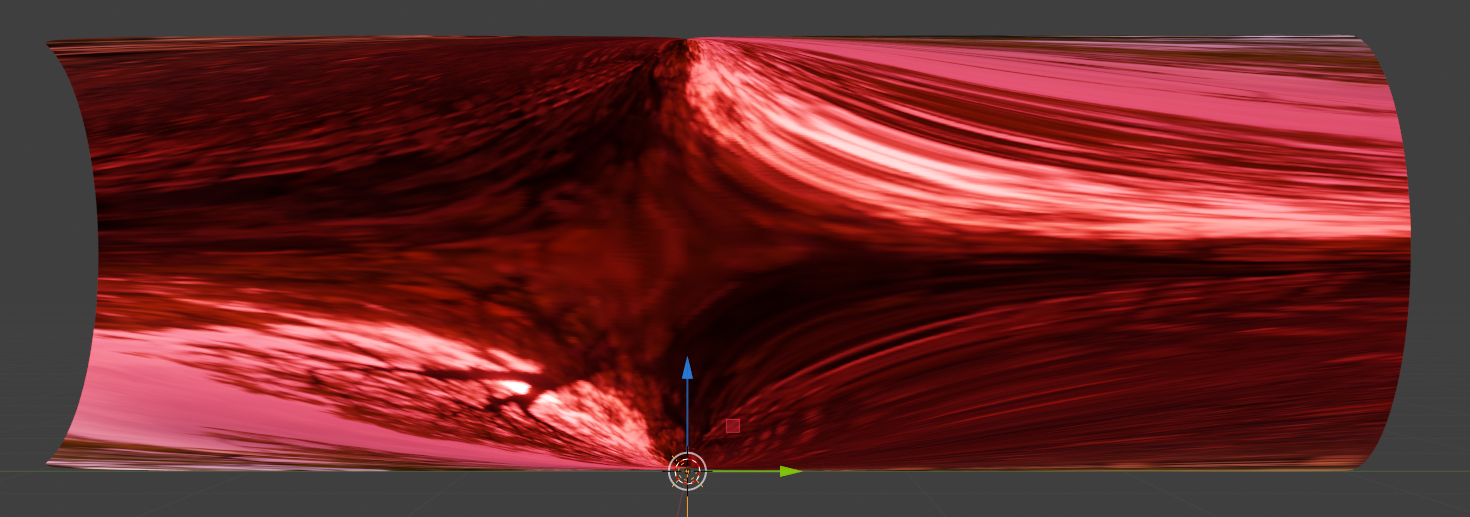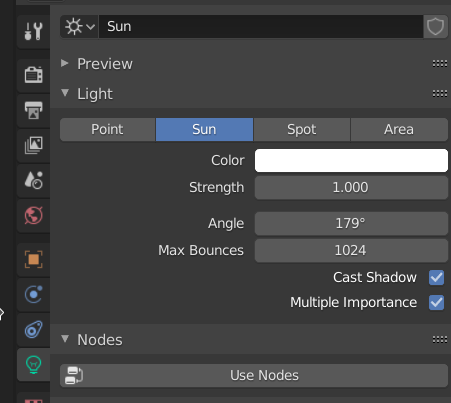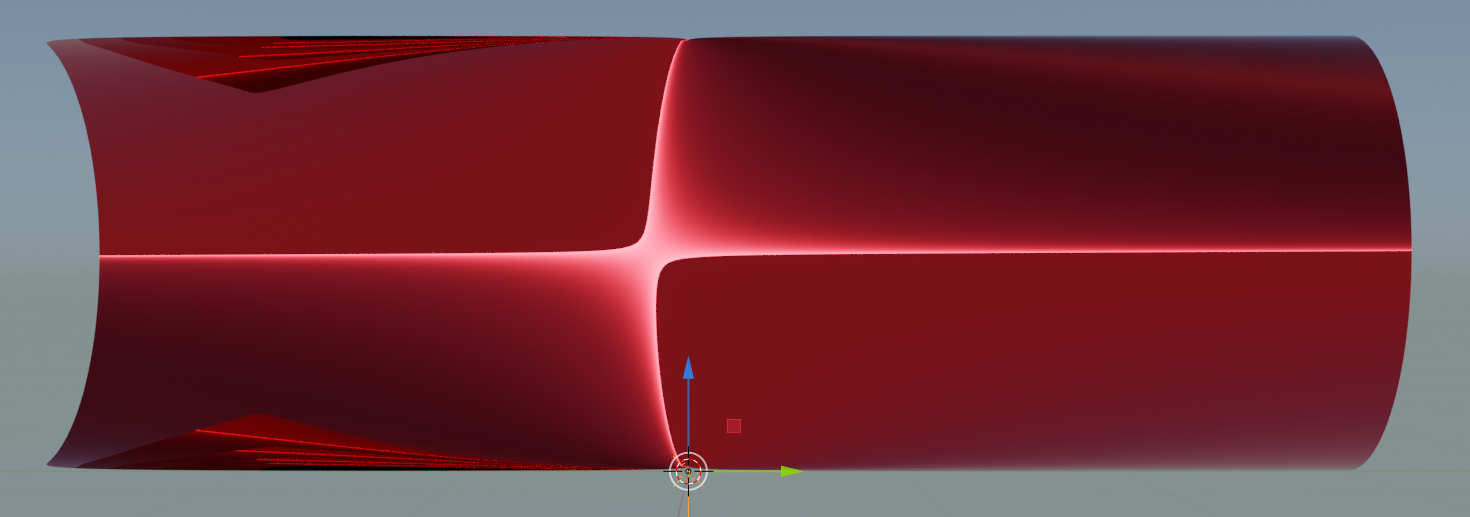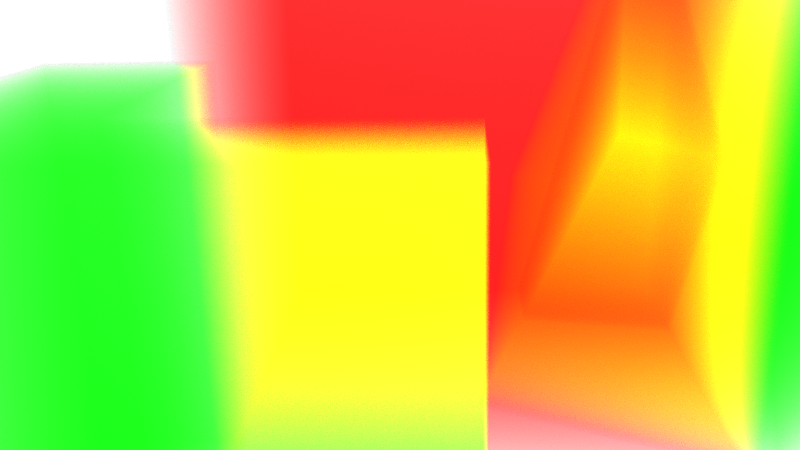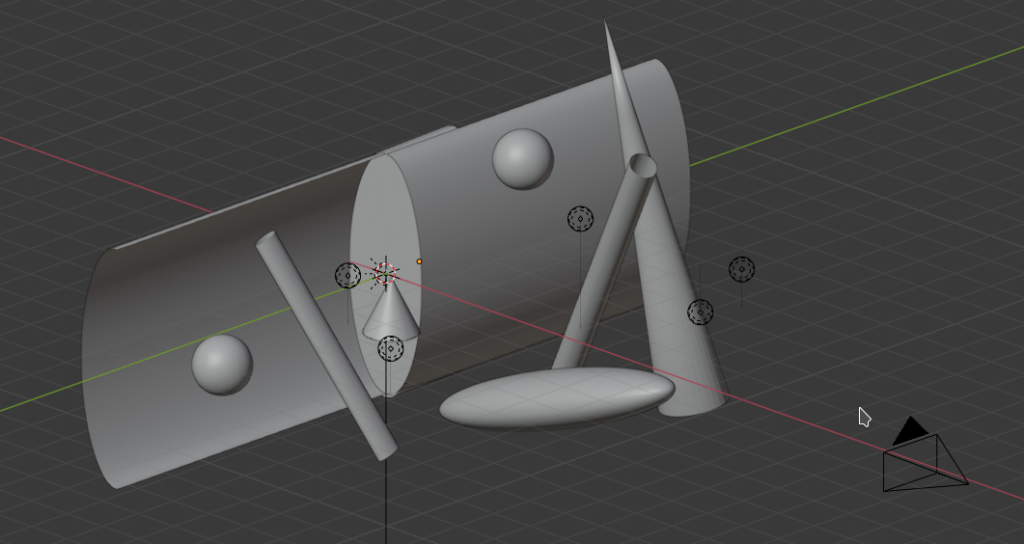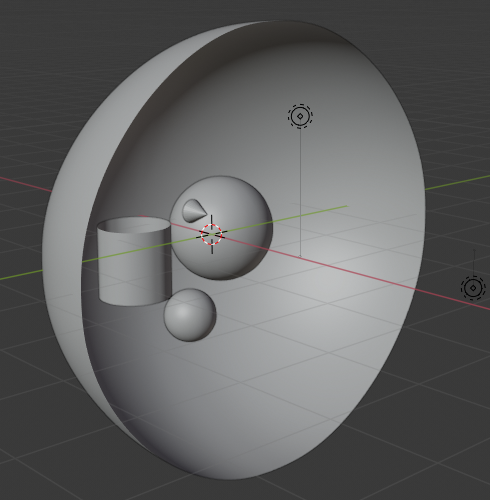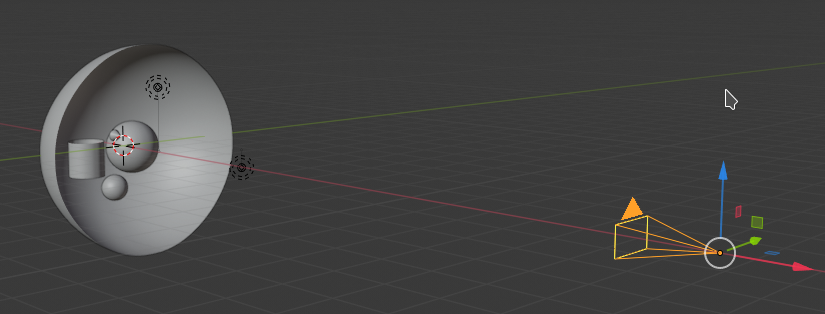I wanted to work a bit more with my S-curve project in Blender. See e.g.
At my present location I have to use my old but beloved laptop. As a new start in the project I just wanted to make a little movie showing dynamic changes in the reflections of some moving spheres in front of the S-curve’s metallic surface. As I had already created a few Blender movies some years ago I expected this to be an easy job. But I ran into severe trouble. A major reason was the fact that Opensuse does not provide a reasonably usable RPM of a current Blender versions for Leap 15.3.
I had upgraded the laptop to Leap 15.3 in December, 2022. The laptop has an Optimus system. Of course, I prefer the Nvidia card when creating scenes with Blender. I had had some minor problems with prime-select before. But after recent updates I did not get the Nvidia card running at all – neither with Bumblebee nor with Opensuse’s prime-select. I had to invest an hour to solve this problem. After a complete uninstall of Bumblebee and bbswitch and a de- and re-installation of the Nvidia drivers and suse-prime I got prime-select working in the end.
Just to find that Blender version 2.82 provided by the Leap 15.3 OSS repository was not really stable in a Leap 15.3 environment.
Blender 2.82 unstable on Opensuse Leap 15.3
I tried to create a movie with 100 frames (400×200) in Matroska format with H.264 encoding. Rendering of the complex S-curve reflections with a strongly reduced number of light ray samples still took considerable time with the Cycles renderer on 2 out of 4 real (and 8 hyperthreaded) CPU cores. It happened that the movie – after rendering an hour – was not baked correctly. In some runs Blender crashed after having rendered around 40 frames.
Therefore I changed my policy to rendering just a collection of PNG images. The risk of wasting something like 8 hours of CPU time for a real animation was just too big. But, a new disaster happened when I wanted to open a “video editing”- project in Blender to stitch the images together to create the final movie. Blender just crashed. Actually, Blender crashed on Leap 15.3 whenever I tried to open any project type other than “General”. Not funny … I had not experienced something like this on Leap 15.2.
Unfortunately, and in contrast to Tumbleweed there is no official and recent version of Blender available for Leap 15.3. So much about stability and reliability of Leap. What to do?
Canonical’s snap service or Flatpak to the rescue
I had read about SNAP of Canonical before – but never tried it. Canonical’s strange side steps during the evolution of Linux have always been disturbing for me. Regarding “snap” I also had a newspaper article in mind about a controversy with Linux Mint – with claims that snap has closed proprietary components and is transmitting telemetry data to Canonical. Working with root rights …
Therefore, a flatpack installation had to be considered, too…. Risks are small on my old laptop. I just tried – despite concerns and doubts regarding snap.
Blender 3.1 via “snap“
I just followed the instructions for Opensuse on https://snapcraft.io/docs/installing-snap-on-opensuse to install “snap” on my Leap 15.3 system. As root:
zypper addrepo --refresh https://download.opensuse.org/repositories/system:/snappy/openSUSE_Leap_15.3 snappy zypper install snapd systemctl enable --now snapd systemctl enable --now snapd.apparmor rcsnapd status # install blender snap install blender --channel=3.1/stable --classic
Another description can be found here:
https://www.linuxcapable.com/how-to-install-snap-snap-store-snapcraft-on-opensuse-leap-15/
The run-time environment of snap is handled by a daemon “snapd”. We find the majority of the installed files in four directories
/snap -- 1.1 GB thereof 686 MB for Blender /usr/lib/snap -- 48 MB /var/snap -- almost nothing /var/lib/snapd -- 360 MB
In the first directory you also find the installed applications. In my case “Blender 3.1.2”.
The folder “/snap” contains around 1.1 GB. Blender is part of it and consumes 686 MB.
The startup of Blender via
/snap/bin/blender &
takes about 2 secs. Loading my S-curve test file took even longer. Otherwise snap’s Blender version 3.1.2 seemed to work perfectly. All the bugs I had seen with 2.82 were and are gone. And: I could not really notice a difference in performance when working with 3D objects in the Blender viewport. For a render test case I found 17.72 secs per frame on average. Memory release after leaving Blender seemed to be OK.
Blender 3.1 via Flatpak
Then I tried a Blender installation with flatpak. The installation is almost as simple as for snap. See https://www.flatpak.org/ setup/ openSUSE. Which sums up more or less to issuing the following commands :
zypper install flatpak flatpak remote-add --if-not-exists flathub https://flathub.org/repo/flathub.flatpakrepo flatpak install flathub org.blender.Blender
The required packages of the Opensuse repository were

Regarding the installation I was surprised to find that flatpak requires much more space than snap. The majority of flatpack files is located in the following folder:
/var/lib/flatpak -- 2.3 GB, thereof around 628 MByte for Blender
So, in comparison to snap, this makes a remarkable huge difference regarding the required files to provide a working runtime environment! I understand that for just one application many files have to be provided for a stable run-time environment on KDE – but in comparison to the snap installation it appears bloated.
We start flatpak’s Blender via
flatpak run org.blender.Blender &
The startup time was comparable to the snap installation – no difference felt. The test render time per frame was 18.95 secs. So that was 1.2 secs or 6.5 % slower than snap. Reason unclear. The difference after repeated trials was sometimes a bit smaller (4%), but sometimes also bigger (8.5%) -depending on the start order of the blender applications. But on average snap’s Blender was always a bit faster. I regard the difference is not really as problematic. But it is interesting. Memory release worked also perfectly with flatpak’s Blender installation.
Conclusion
Before you start struggling with the Blender 2.82 binary Opensuse provides, it is really worth trying a flatpak-based or a snap-based installation of Blender 3.1.2. On my system both worked perfectly.
Before you make a decision whether to go with flatpak or snap take into account the critical points which were discussed on the Internet regarding proprietary aspects of snap. Personally, I am going to use flatpak for Blender.
Otherwise, my opinion is that distributors like Opensuse should provide an important application as Blender in its present version as a binary and resolve dependencies as soon as possible. For me a flatpack installation is just a compromise. And it cost me a lot of valuable SSD space.
Links
https://www.linux-community.de/ausgaben/ linuxuser/2018/02/dreikampf/
https://hackaday.com/2020/06/24/whats-the-deal-with-snap-packages/
https://www.makeuseof.com/snap-vs-appimage-vs-flatpak/
Ceterum censeo: The worst living fascist and war criminal today who must be isolated, denazified and imprisoned is the Putler.


